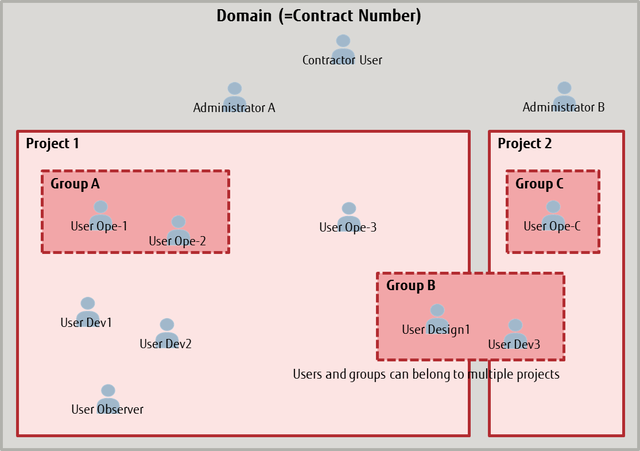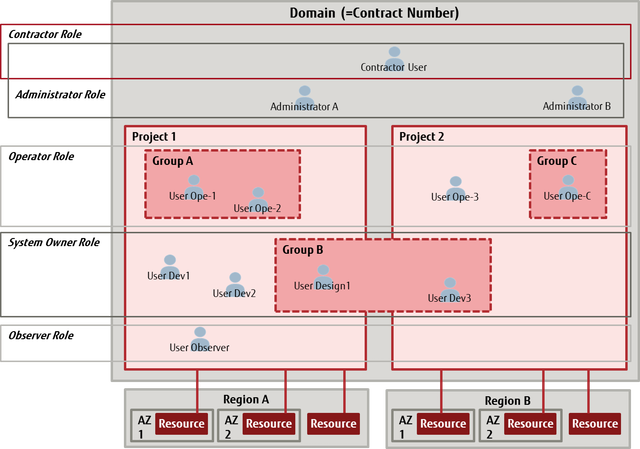Information to Know in Advance
This section explains the concepts provided by the user management functions.
With IaaS, the contractor user creates other users, and each user uses their created user name to log in to the system in order to access the services. The users shown in the following figure must be created in order to create and use virtual resources:
Figure: Relationship Concepts Provided by the User Management Functions

Domain
The area available to an organization that has subscribed to this service is shown in units of service contracts. When the organization successfully enters into a license agreement, the system grants a contract number, which is then set as the domain name.
User
A person who logs in to the system to use the service functions and to manage resources.
Project
An organization to which the user belongs. More than one project can be created within a domain. Most virtual resources are created under projects, so, for example, you can create and use a different project for each department at your company to implement different styles of system management appropriate to each department.
Group
A collection to which multiple users can belong. For example, you can use this to manage user rights collectively.
Role
The information that is used to assign privileges to users or groups. The following six roles are defined by default. You can assign them according to the role of each user:
- Contractor role
- Administrator role
- System Owner role
- Operator role
- Observer role
- Member role
Figure: Domain, Group, and User Relationships
